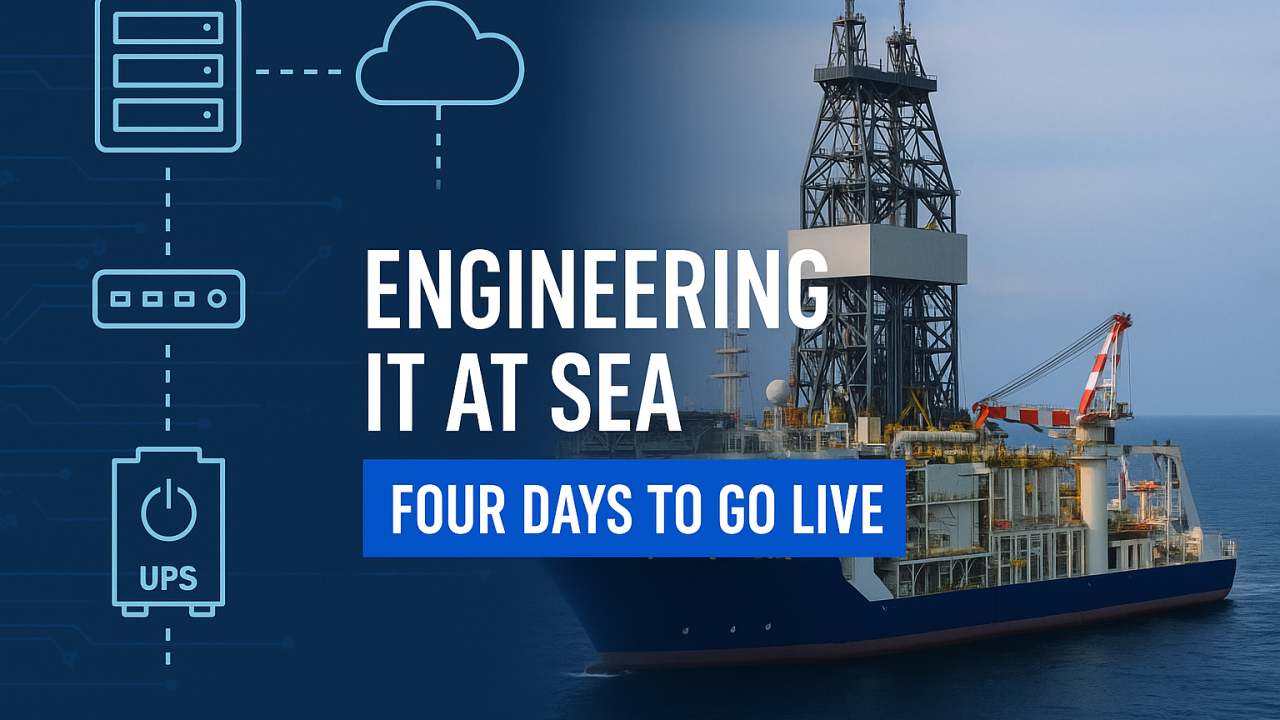Picture this: you board a drill ship, hundreds of kilometers offshore, in a foreign country, with one mission – deliver a fully functional IT environment, complete with: wired and wireless network coverage for nine decks and multiple drill floor cabins/offices, servers, storage, power, security appliances, and communications equipment, before sailing to the Philippines and drilling starts. Four days. No second chances. No delays.
Key Challenges
- Harsh, Isolated Environment: Salt, tropical heat, humidity, and constant ship movement test every piece of equipment.
- Tight Logistics: Miss the supply boat, and that missing switch or server could cost days.
- Limited Connectivity: Satellite links must be tuned for stability and optimized for business-critical traffic.
- Mixed Vendors & Legacy Gear: Integrating new wired and wireless networks and systems with different hardware and configurations.
- Power Stability: Shipboard power fluctuations can damage hardware – UPS sizing and runtime planning are critical.
How We Made It Work
- Implementation Project on Paper (IPOP): Every port, cable, VLAN, and configuration is documented before stepping onboard. This blueprint became the offshore deployment team’s single source of truth, reducing guesswork and wasted time.
- Constant Practice During Staging: We ran the entire deployment multiple times and multiple facilities onshore (in the Philippines and Malaysia) – racking gear, routing cables, loading configs – until it became second nature. This rehearsal phase eliminated surprises in the field.
- Lessons Learned from Past AARs: Previous After Action Reviews gathered from past drill team campaigns shaped our approach.
- Pre-configured Kits: Servers, firewalls, switches, and communications equipment were staged, tested, and labeled before transferring to the rig and leaving port.
- Priority-Based Rollout: Core network first, then authentication, storage, applications, security controls, and user access.
- UPS Strategy: Primary and contingency/backup UPS units were sized for both runtime and load, ensuring protection during generator transitions and voltage dips.
- Remote-First Support: Offshore team handled physical work; onshore team managed advanced configs and monitoring.
- Strict Change Management In a compressed timeline, every change must have a reason – no “while we’re here” tweaks that risk downtime.
The Result By combining disciplined planning (IPOP), repetitive rehearsal (staging), and the hard-won knowledge of previous AARs, we delivered a fully operational IT infrastructure in less than a week – on time, fully functional, and ready for operations.
In high-stakes offshore projects, the lesson is simple: Plan it. Practice it. Learn from the past. Then execute without hesitation.



Leave a Reply